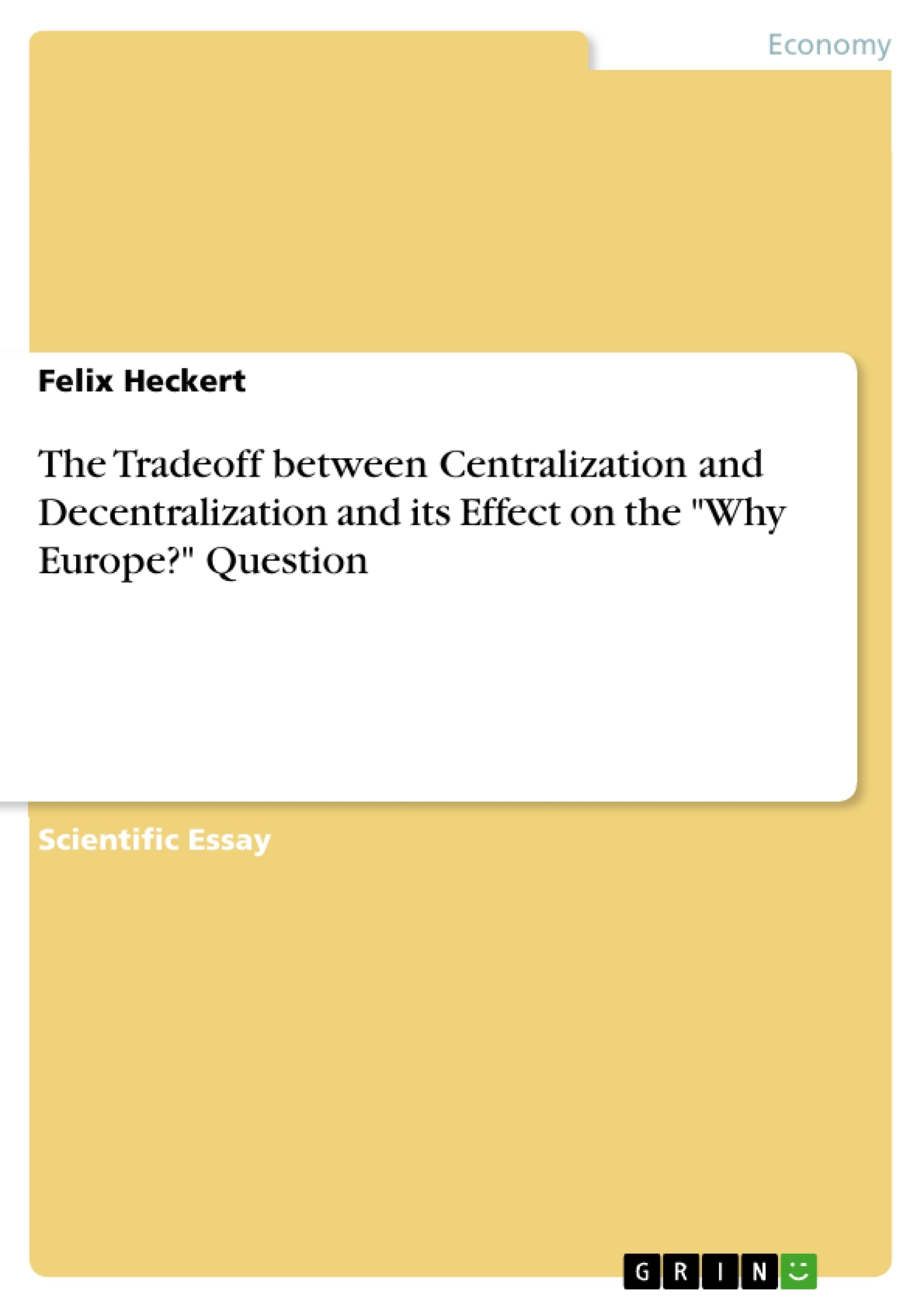Significant and sustainable economic organizations as well as a period of its wide development first arouse during the early modern period in Europe. The three main elements of economic growth, flow of technology, migration out of traditional agriculture, and external effects in cities (Lucas, 2009) are connected through organizational theory.
Inhaltsverzeichnis (Table of Contents)
- Introduction
- Nature of the Tradeoff
- Evaluation of “Tradeoff”
- How Tradeoff Played Itself Out in Europe
- Additional Light on Assignment I…
- Summary..
Zielsetzung und Themenschwerpunkte (Objectives and Key Themes)
This paper explores the tradeoff between centralization and decentralization and its impact on the economic development of Europe, specifically focusing on the early modern period. It aims to understand how this tradeoff contributed to the rise of real wages and the emergence of significant economic organizations in Europe.
- The role of economic governance and organizational theory in economic growth
- The impact of centralization and decentralization on political and economic structures
- The relationship between population growth, warfare, and structural transformations
- The transition from a limited access order to an open access order in European countries
- The impact of decentralization on industrialization and the role of property rights
Zusammenfassung der Kapitel (Chapter Summaries)
- Introduction: This chapter introduces the concept of the tradeoff between centralization and decentralization and its relevance to European economic history. It highlights the contributions of Oliver Williamson and Elinor Ostrom to the understanding of economic governance.
- Nature of the Tradeoff: This chapter delves into the nature of the tradeoff between centralization and decentralization, explaining how local governments can act faster than central authorities due to proximity and specific needs. It also discusses the communication costs associated with centralized administration of large populations.
- Evaluation of “Tradeoff”: This chapter examines the role of centralization in establishing a third party to enforce measures, weights, currency, laws, and toll systems during the transition to an open access order. It emphasizes that both centralization and decentralization can have advantages, depending on the specific needs of the population.
- How Tradeoff Played Itself Out in Europe: This chapter explores how the tradeoff played out in Europe, specifically focusing on the shift towards decentralization in the early modern period. It examines the role of population growth and warfare as driving forces behind this structural transformation.
- Additional Light on Assignment I…: This chapter provides additional insights and analysis related to the tradeoff between centralization and decentralization in Europe.
Schlüsselwörter (Keywords)
Key terms and concepts discussed in this paper include centralization, decentralization, economic governance, organizational theory, early modern period, economic growth, real wages, limited access order, open access order, property rights, industrialization, and federalism.
- Quote paper
- Felix Heckert (Author), 2009, The Tradeoff between Centralization and Decentralization and its Effect on the "Why Europe?" Question, Munich, GRIN Verlag, https://www.grin.com/document/164874



